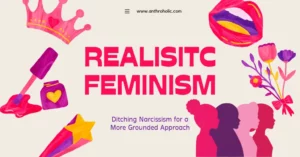AI Answer Evaluation Platform Live Now. Try Free Answer Evaluation Now
Glaciations
Glaciations refer to the periods within an ice age that are marked by colder temperatures and glacier advances. These epochs have carved landscapes, influenced global climate patterns, and even impacted human evolution.

What are Glaciations?
Glaciations are periods of time when a significant part of the Earth’s surface is covered by ice sheets and glaciers [1]. During these periods, glaciers advance from the poles towards the equator, radically transforming the Earth’s landscape and significantly affecting the global climate. Glaciations alternate with warmer periods known as “interglacials”, during which glaciers retreat.
Historical Glaciation Periods
The Earth’s history has witnessed several major glaciation periods. Here are the most significant ones:
- Huronian Glaciation (2400 – 2100 million years ago): One of the earliest and longest ice ages, the Huronian Glaciation was a result of reduced greenhouse gases in the atmosphere.
- Cryogenian Glaciation (720 – 635 million years ago): This period witnessed the most severe ice ages known as “Snowball Earth”, where the entire planet was possibly covered in ice.
- Andean-Saharan Glaciation (450 – 420 million years ago): This ice age primarily affected the large landmasses in the Southern Hemisphere and the Sahara region.
- Late Paleozoic Ice Age (335 – 260 million years ago): Occurring during the Carboniferous and Permian periods, this was the longest ice age of the Phanerozoic eon.
- Quaternary Glaciation (2.6 million years ago to present): This is the current ice age where the most recent glaciation period, the “Last Glacial Period”, ended about 11,700 years ago.
| Glaciation Periods | Time Span (million years ago) |
|---|---|
| Huronian | 2400 – 2100 |
| Cryogenian | 720 – 635 |
| Andean-Saharan | 450 – 420 |
| Late Paleozoic | 335 – 260 |
| Quaternary | 2.6 – present |
Causes of Glaciations
Glaciations are primarily caused by the following factors:
- Changes in Earth’s Orbit (Milankovitch Cycles): Variations in Earth’s orbital eccentricity, axial tilt, and precession significantly impact the amount of sunlight reaching the Earth’s surface, which can trigger glaciation periods.
- Plate Tectonics: The shifting of Earth’s continents can alter ocean and air currents, leading to changes in heat distribution across the globe and thus initiating glaciations.
- Atmospheric Composition: Changes in the levels of greenhouse gases like carbon dioxide and methane can affect global temperatures, potentially triggering glaciation periods.
Impact of Glaciations
The effects of glaciations are profound and wide-ranging [2; 3]:
- Landscape Transformation: Glaciers carve the land through erosion, creating valleys, mountains, and distinctive landforms like U-shaped valleys and drumlins.
- Sea Level Changes: Glaciation periods lock vast amounts of water in ice, leading to a drop in sea levels. Conversely, melting glaciers during interglacials cause sea levels to rise.
- Biodiversity Shifts: Glaciations can cause mass extinctions, but they can also create new habitats for species adaptation and evolution.
- Human Evolution: Fluctuating climates due to glaciations may have driven human evolution, with our ancestors adapting to significant environmental changes.
Conclusion
Glaciations, while marking some of the Earth’s most severe climatic conditions, play an integral role in shaping the natural world and driving evolution. As we continue to face climate change, understanding the mechanisms and impacts of glaciations can help us predict and manage future environmental shifts.
References
[1] Pielou, E. C. (1991). “After the Ice Age: The Return of Life to Glaciated North America”.
[2] Benn, D. I., & Evans, D. J. A. (2010). “Glaciers and Glaciation”.
[3] Lambeck, K., & Chappell, J. (2001). “Sea Level Change Through the Last Glacial Cycle”.




